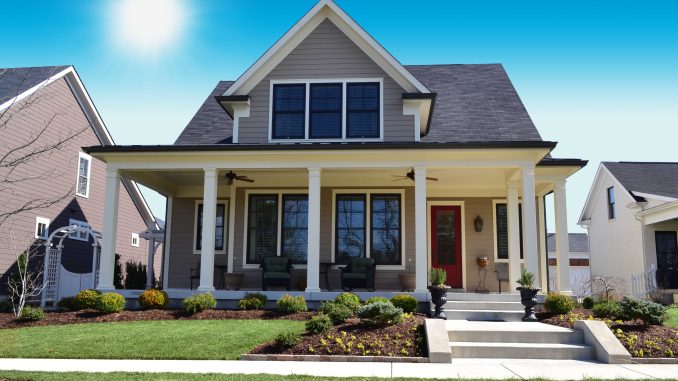
As wildfires become an increasingly common threat, particularly in regions prone to hot, dry conditions, homeowners must prioritize their property’s safety. The destruction caused by wildfires can be devastating, leading to loss of homes, personal belongings, and even lives. Fortunately, advancements in smart security systems provide innovative solutions to help protect homes from wildfires. Here’s how you can leverage these technologies to safeguard your property effectively.
Understanding Wildfire Risks
Before discussing specific smart security solutions, it’s essential to understand the factors that contribute to wildfire risks. These include:
Proximity to Wildland Areas: Homes located near forests or grasslands are at higher risk.
Dry Conditions: Prolonged periods of drought can increase fire susceptibility.
Wind Patterns: Strong winds can carry embers and flames over long distances.
Human Activity: Many wildfires are ignited by human activities, whether accidental or intentional.
Given these risks, it’s crucial for homeowners to implement proactive measures to mitigate potential threats. Smart security systems can be a key part of this strategy.
1. Smart Smoke and Heat Detectors
Traditional smoke detectors are essential, but smart smoke and heat detectors take safety a step further. These devices can:
Provide Real-Time Alerts: Smart detectors can send alerts directly to your smartphone or a monitoring service when smoke or heat is detected, allowing you to take immediate action even if you’re not home.
Integrate with Home Automation Systems: Many smart detectors can integrate with other home automation devices. For example, if smoke is detected, the system can automatically unlock doors for easier evacuation and turn on lights to guide you safely out of the house.
Monitor Air Quality: Advanced models can also monitor air quality and particulate matter levels, alerting you when conditions become hazardous.
2. Wildfire-Sensitive Surveillance Cameras
Surveillance cameras equipped with advanced features can be invaluable in monitoring the environment surrounding your home. Look for cameras that offer:
Smoke and Fire Detection: Some smart cameras can detect smoke and fire and send alerts to your phone before traditional smoke detectors might react.
Thermal Imaging: Cameras with thermal imaging capabilities can identify hotspots in your vicinity, giving you a heads-up about nearby fires even before flames become visible.
Remote Monitoring: With a mobile app, you can check your cameras from anywhere, allowing you to monitor for any signs of danger and respond promptly.
3. Smart Irrigation Systems
In addition to surveillance and detection systems, homeowners can leverage smart irrigation systems to create a defensible space around their property. Here’s how they help:
Automated Watering: These systems can automatically water your landscaping, helping to keep vegetation hydrated and less prone to ignition during hot, dry weather. They can be programmed to water at specific times, ensuring that the landscape remains moist even during dry spells.
Remote Control: Smart irrigation systems can be controlled remotely via mobile apps, allowing you to adjust watering schedules as conditions change. If a wildfire warning is issued, you can quickly increase watering to enhance your home’s defenses.
4. Smart Home Security Systems
Comprehensive smart home security systems can offer multiple layers of protection:
Mobile Alerts: These systems can send alerts directly to your phone if any unusual activity is detected, such as a break-in while you evacuate.
Integration with Emergency Services: Some smart security systems can automatically contact emergency services if smoke or fire is detected, ensuring that help is on the way.
Remote Access Control: With smart locks, you can control access to your home remotely. If you need to evacuate, you can lock your doors from your mobile device, ensuring that your home remains secure.
5. Fire-Resistant Materials and Design
While smart technology plays a vital role in protecting homes, it’s also essential to consider the physical aspects of your home:
Fire-Resistant Materials: Use fire-resistant building materials for roofs, siding, and decks. Metal roofs and stucco exteriors can significantly reduce fire risk.
Defensible Space: Create defensible space around your home by clearing flammable vegetation, maintaining a buffer zone, and landscaping with fire-resistant plants.
Windows and Doors: Install tempered glass windows and solid-core doors to help protect against radiant heat and embers.
6. Emergency Preparedness Plans
No security system can completely eliminate the risk of wildfires, making it crucial to have an emergency preparedness plan in place:
Create an Evacuation Plan: Designate escape routes and meeting points for your family. Practice evacuation drills to ensure everyone knows what to do in an emergency.
Assemble an Emergency Kit: Prepare an emergency kit containing essential items such as water, food, medications, flashlights, batteries, important documents, and contact information.
Stay Informed: Monitor local news and weather reports for fire warnings, and consider subscribing to alerts from local emergency management agencies.
Conclusion
Protecting your home from wildfires requires a combination of smart technology and proactive planning. By investing in smart security systems such as smoke detectors, surveillance cameras, and irrigation systems, you can enhance your home’s resilience against wildfires. Additionally, incorporating fire-resistant materials and having an emergency preparedness plan will further safeguard your property and loved ones. As the threat of wildfires continues to grow, adopting these measures is not just a precaution—it’s an essential step toward ensuring safety and peace of mind.